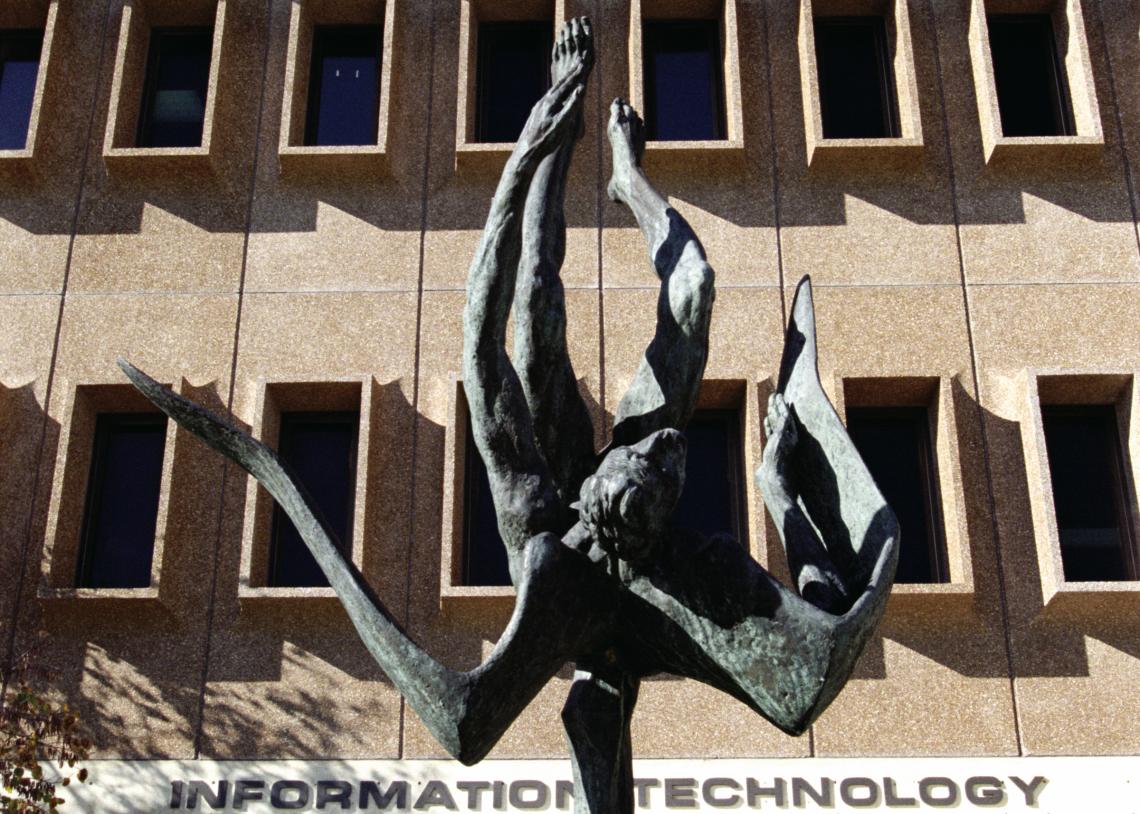
The sculpture, mounted on a black-granite base at the southeast entrance to Nichols Hall in the West District, is drawn from the Greek myth of Daedalus and his son. Icarus.
They tried to escape imprisonment on the isle of Crete by flying on wings whose feathers were attached with wax. Icarus was so exhilarated by flying that he rose too close to the sun, which melted the wax; he is portrayed as he plunges from the sky.
The statue’s inscription says it represents “the willingness of mankind to experiment and to venture into the unknown even though such quests may be dangerous.”
Sculptor Charles Umlauf (1911-94) created several versions of the image; this bronze is 11 feet 6 inches high and 6 feet 6 inches wide and was cast in 1964 at a foundry in Milan, Italy. It is the gift of the Phillips Petroleum Co. of Bartlesville, Okla., and had been in the lobby of its headquarters there.
Umlauf taught for 40 years at the University of Texas-Austin. His works are held by the Metropolitan Museum of Art, the Smithsonian Institute, and other public institutions and by many private collections.
Icarus
Southeast entrance to Nichols HallLawrence, KS 66045